
Last February Christine Doan, archivist for the Sisters of the Presentation in San Francisco, donated papers documenting the participation of Sister Patricia Marie Mulpeters in the Leadership Conference of Women Religious. Since we serve as the archival repository for LCWR, we were happy to receive these papers.
In March Alice Osberger donated a small collection of papers (1921-1975) of her brother, Frank B. Flynn, representing his educational career at Cathedral School, Christian Brothers High School (St. Joseph, MO), the University of Notre Dame, and Drury College (Springfield, MO), and his service in World War Two. The collection also includes a few later papers.
In April Mary Louise Hartman donated the first accession of Records of the Association for the Rights of Catholics in the Church (ARCC), 1980-1990; consisting of foundational documents, publications, working papers, advocacy, dissent, publicity, action alerts, and Board of Directors’ files.
In July Mary Charlotte Chandler, RSCJ, sent records of the Center for the Study of Religious Life in Chicago, which closed on June 30th. These records document the whole history of the Center (1998-2009); they include files from the CRLS Board and Corporation, financial records, programs and publications, files on organizations including LCWR, CMSM, USCCB, and other religious life organizations and educational institutions; topical files, committee files, files on scholars, director’s presentations and travel files, and a file on significant historical moments.
Also in July John Walbridge donated the papers of his wife, Linda Walbridge, a Catholic anthropologist who studied Christians in Pakistan, including Bishop John Joseph, the first Punjabi Catholic bishop. These papers also include her research files on Arab Shi’ism among Lebanese immigrants in Michigan.
In August Mary Good donated the William and Mary Good Papers, which include records dating from the late 1950s through the 1990s representing Bill Good’s work with college Young Christian Students, including correspondence, minutes of meetings, study workshops, study days, study weeks, retreats, newsletters, reports, working documents, pamphlets, inquiry booklets and mimeographed circulars. Mrs. Good also sent papers that she collected from her participation in Young Christian Workers. These papers supplement our large collections of records from Young Christian Students and Young Christian Workers.
Also in August Irene Leahy donated papers of her husband Eugene J. Leahy, consisting chiefly of course material for the music classes he taught at Notre Dame. Mary Craypo donated papers of her husband Charles Craypo, including research files for his book on Wal-mart (the manuscript of which was almost finished at the time of his death) and records of his earlier studies of the working poor, his work on the telegraph industry, and his teaching at Notre Dame.


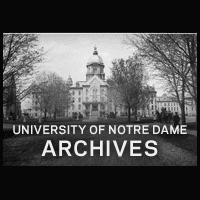
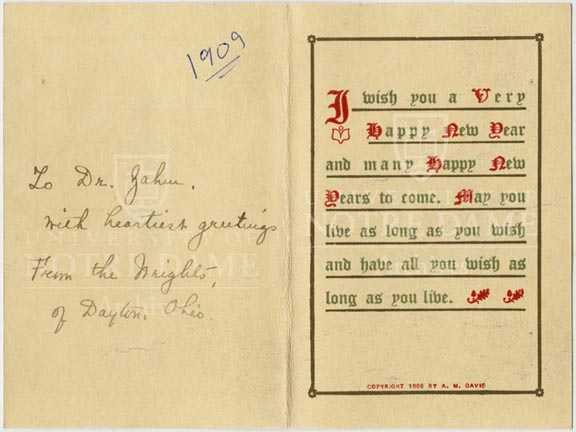
 Scholastic, December 28, 1867
Scholastic, December 28, 1867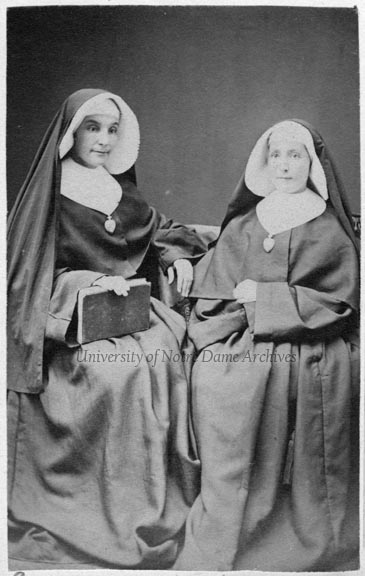
 Two unidentified Holy Cross (CSC) Sisters, c1860s-1870s
Two unidentified Holy Cross (CSC) Sisters, c1860s-1870s Mass of thanksgiving in the Holy Cross Sisters’ convent chapel, 1958/0504.
Mass of thanksgiving in the Holy Cross Sisters’ convent chapel, 1958/0504.  Conference of Major Superiors of Women (CMSW), later Leadership Conference of Women Religious (LCWR), August 1963
Conference of Major Superiors of Women (CMSW), later Leadership Conference of Women Religious (LCWR), August 1963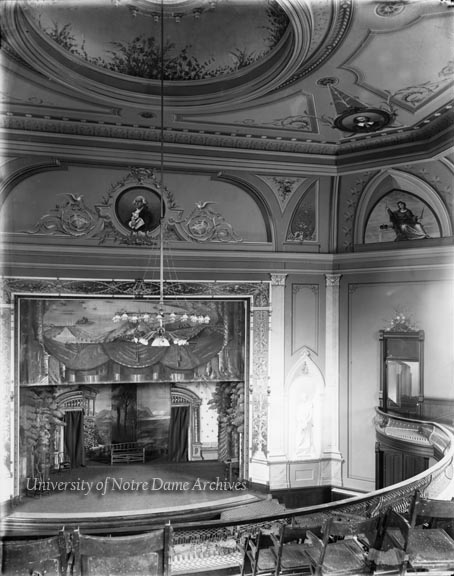

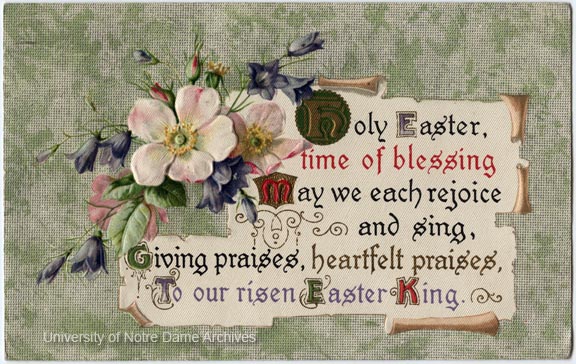
 CEDW 16/11 (Calendared XI-2-m): Easter postcard that reads “Holy Easter, time of blessing, May we each rejoice and sing, Giving praises, heartfelt praises, To our risen Easter King.” This postcard was sent to
CEDW 16/11 (Calendared XI-2-m): Easter postcard that reads “Holy Easter, time of blessing, May we each rejoice and sing, Giving praises, heartfelt praises, To our risen Easter King.” This postcard was sent to 

 GPHR 45/2646: Four Notre Dame Presidents Gathered Together, 1956/1221.
GPHR 45/2646: Four Notre Dame Presidents Gathered Together, 1956/1221.